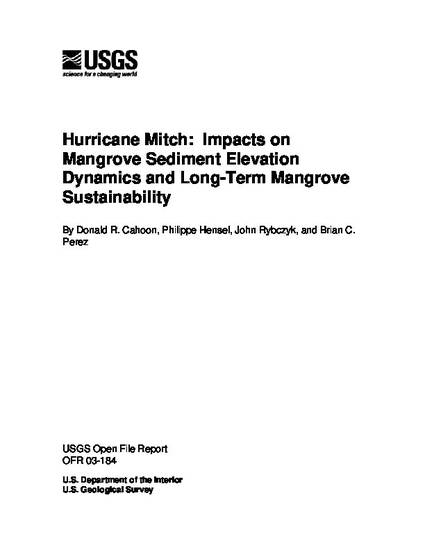
- Mangrove sediment,
- Mangrove sustainability
Hurricane Mitch left three very different impacts on mangroves in the coastal zone of Central America. First, in the Caribbean, direct wind and flood-induced mangrove mortality was seen in the Bay Islands. Second, wave-induced erosion of beaches and subsequent sediment deposition buried mangrove forests of Punta de Manabique, Guatemala. Finally, along the Pacific coast, some mangroves of the Gulf of Fonseca were buried under up to 100 cm of sediments eroded from uplands and carried down slope by river flooding. Each of these three impacts left a different footprint on the mangrove communities, and these communities are expected to follow different recovery trajectories. These time-dependent responses will lead to different rates of success at reaching prehurricane conditions and imply differences in mangrove forest sustainability in face of a constantly changing environment. Rising sea level, for example, might make Caribbean mangroves more susceptible to hurricane-induced elevation deficits.
Available at: http://works.bepress.com/john_rybczyk/47/
